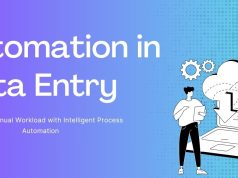In today’s data -driven trade scenario, efficient information management has become the cornerstone of the organizational success. Text data entry – the process of converting different information forms to find, editable digital text – this presents as an original component of this ecosystem. Whether you handle customer information, product description or business analysis, the way you process and store these text data greatly affects operating efficiency.
Understanding the Value of Textual Data Entry
As digital transformation accelerates across industries have evolved from simple typing tasks to sophisticated information processing systems. Modern encompasses a range of activities from manual keyboard input to advanced OCR (Optical Character Recognition) technologies that convert scanned documents into editable text formats.
In this comprehensive guide, we’ll explore the ten most impactful benefits that textual data entry brings to organizations of all sizes. From enhancing data accessibility to driving cost efficiencies, these advantages demonstrate why investing in quality textual data entry processes remains essential in our increasingly digital world.
1. Enhanced Data Accessibility and Searchability
One of the main benefits of professional text data introduction is a dramatic improvement in data availability. When the information is present in digital text format instead of handwritten notes, physical documents or image files, it becomes infinitely more effective to get specific information.
Modern word processing systems enable powerful search functions that allow users to detect accurate data points within seconds-a task that may take hours or day with no concert information. Think about how soon a specific customer call can be found in the text data recorded correctly in your CRM as you search through the submission of the cabinet of paper journals in CRM.
Additionally, digital text can be easily indexed by internal systems and search engines alike. This indexing creates a structured foundation for knowledge management that supports both day-to-day operations and long-term business intelligence initiatives. According to research by McKinsey Digital, organizations that effectively digitize their information assets typically see a 20-25% increase in productivity related to information retrieval tasks.
2. Improved Data Accuracy and Quality
Manual processing of information introduces numerous opportunities for human error. Professional textual data entry services implement rigorous quality control measures that significantly reduce error rates compared to casual data handling approaches.
Quality textual data entry typically includes:
- Double-key verification processes
- Automated validation checks
- Specialized quality assurance teams
- Standardized data formatting
When implemented properly, these measures can reduce error rates to less than 0.5% compared to error rates of 3-5% for non-specialized data handling. This improvement in accuracy has cascading benefits throughout an organization as high-quality data leads to better business decisions, fewer operational disruptions, and enhanced customer experiences.
Professional data entry specialists are trained to recognize inconsistencies and potential errors that might go unnoticed by untrained staff, further enhancing the value of specialized textual data entry services.
3. Cost Efficiency and Resource Optimization
Outsourcing textual data entry or implementing dedicated systems offers substantial cost advantages compared to utilizing high-cost internal resources for data processing tasks. Companies frequently discover that specialized data entry services can deliver higher quality results at 40-60% lower costs than handling these processes internally with non-specialized staff.
The cost benefits emerge from several factors:
- Elimination of training costs for internal staff
- Reduced need for expensive data correction processes
- Lower infrastructure investments in specialized hardware/software
- Scalable resources that adjust to workload fluctuations
- Prevention of opportunity costs from misallocating skilled employees
For many organizations, the ideal approach involves maintaining a small internal data management team that oversees outsourced textual data entry operations. This hybrid model maximizes cost efficiency while ensuring proper oversight and integration with business processes.
4. Enhanced Data Security and Compliance
Professional textual data entry services typically implement robust security protocols that protect sensitive information more effectively than ad-hoc processes. These security measures include:
- Strict access controls and authentication systems
- Encrypted data transmission and storage
- Comprehensive audit trails of all data handling activities
- Regular security assessments and updates
Beyond basic security, specialized textual data entry providers stay updated on relevant compliance requirements such as GDPR, HIPAA, and industry-specific regulations. This expertise helps organizations maintain compliance while processing various types of information.
According to the International Association of Privacy Professionals, organizations with formalized data handling procedures experience 48% fewer data breaches than those with informal approaches. Properly structured textual data entry systems contribute significantly to this enhanced security posture.
5. Improved Operational Efficiency
Converting information to searchable digital text formats creates numerous opportunities for automation and workflow optimization. Once data exists in structured text formats, it becomes available for:
- Automated report generation
- Integration with business intelligence systems
- Workflow automation triggers
- Algorithmic analysis and pattern recognition
These capabilities translate directly into operational efficiencies across departments. For example, customer service representatives can quickly access complete customer histories, accounting teams can automate reconciliation processes, and management can generate real-time performance reports.
A study by Forrester Research found that organizations implementing structured data entry processes experienced an average 27% reduction in time spent on data retrieval and reporting tasks. This time savings allows employees to focus on higher-value activities that require human judgment and creativity.
6. Better Decision Making Through Data Analysis
The ability to effectively analyze information depends heavily on having well-structured, accurate textual data. When information exists in consistent, digital formats, advanced analytics become possible, enabling:
- Trend identification across large datasets
- Predictive modeling based on historical patterns
- Automated insight generation
- Comparative analysis across business units or time periods
Organizations with mature textual data entry practices report making data-driven decisions 3-5 times more frequently than those with inconsistent data management approaches. This increased analytical capability translates directly into competitive advantages through more informed strategic planning and tactical execution.
As noted in Harvard Business Review research, companies in the top third of their industry in terms of data-driven decision making were, on average, 5% more productive and 6% more profitable than their competitors. Quality textual data entry establishes the foundation for this analytical advantage.
7. Enhanced Customer Experience and Satisfaction
Effective textual data entry significantly improves customer experiences by enabling faster, more personalized service interactions. When customer information is properly digitized and accessible, service representatives can:
- Quickly access complete customer histories
- Personalize interactions based on preferences and past behaviors
- Identify potential issues before they escalate
- Provide consistent experiences across service channels
Professional Data Entry understand how to structure customer information for maximum utility in service contexts. This expertise extends beyond simple data entry to thoughtful organization of information that supports superior customer experiences.
Organizations implementing comprehensive textual data entry for customer information typically see 15-20% improvements in customer satisfaction metrics and similar reductions in service resolution times, according to research by the Customer Experience Professionals Association.
8. Simplified Information Sharing and Collaboration
Digital text is the most versatile format for information sharing across teams, departments, and organizations. Unlike specialized file formats or physical documents, properly processed textual data can be easily:
- Shared across different software platforms
- Accessed from mobile devices and remote locations
- Integrated into collaborative workflows
- Version-controlled and tracked for changes
This versatility supports modern collaborative work environments, particularly as remote and hybrid work arrangements become increasingly common. Teams can simultaneously access and work with the same information regardless of location or preferred software tools.
Properly structured textual data also facilitates external collaboration with partners, vendors, and customers through secure sharing mechanisms that maintain data integrity while enabling appropriate access.
9. Reduced Physical Storage Requirements
Converting physical documents to digital text formats dramatically reduces storage requirements and associated costs. Organizations implementing comprehensive textual data entry programs typically report:
- 80-90% reduction in physical storage space needs
- Elimination of document deterioration concerns
- Significant reduction in document retrieval costs
- Enhanced disaster recovery capabilities
Beyond the direct cost savings, digital textual data creates environmental benefits through reduced paper usage and physical storage needs. Many organizations highlight these sustainability advantages in their corporate social responsibility reporting.
The transition from physical to digital text storage also eliminates concerns about document deterioration over time, ensuring that valuable information remains accessible indefinitely without quality degradation.
10. Scalability and Business Growth Support
As businesses grow, their information management needs expand accordingly. Textual data entry systems provide scalability that physical document processes cannot match. Digital text databases can grow to accommodate virtually unlimited information without the linear cost increases associated with physical document management.
This scalability extends to operational capabilities as well. With proper textual data entry systems, organizations can:
- Quickly integrate acquired companies’ information
- Expand into new markets without rebuilding information systems
- Support rapid workforce growth with consistent information access
- Maintain performance even as data volumes multiply
According to research from Deloitte’s Digital Transformation practice, organizations with scalable digital information systems grow revenue 2.5 times faster than competitors with predominantly physical document processes.
Maximizing the Value of Textual Data Entry
The benefits of professional textual data entry extend far beyond simple digitization. From enhanced searchability and improved accuracy to cost savings and scalability, these advantages combine to create substantial competitive advantages for organizations that implement effective textual data processing.
To maximize these benefits, consider working with specialized providers like Data Entry that combine technical expertise with rigorous quality control processes. The investment in quality textual data entry typically delivers returns many times over through operational improvements, enhanced decision-making capabilities, and superior customer experiences.
As digital transformation continues to reshape business landscapes across industries, the importance of high-quality textual data will only increase. Organizations that establish strong textual data entry foundations today position themselves for sustained success in an increasingly data-driven business environment.










